Desertification
Desertification, also called desertization, the process by which natural or human causes reduce the biological productivity of drylands (arid and semiarid lands). Declines in productivity may be the result of climate change, deforestation, overgrazing, poverty, political instability, unsustainable irrigation practices, or combinations of these factors. The concept does not refer to the physical expansion of existing deserts but rather to the various processes that threaten all dryland ecosystems, including deserts as well as grasslands and scrublands.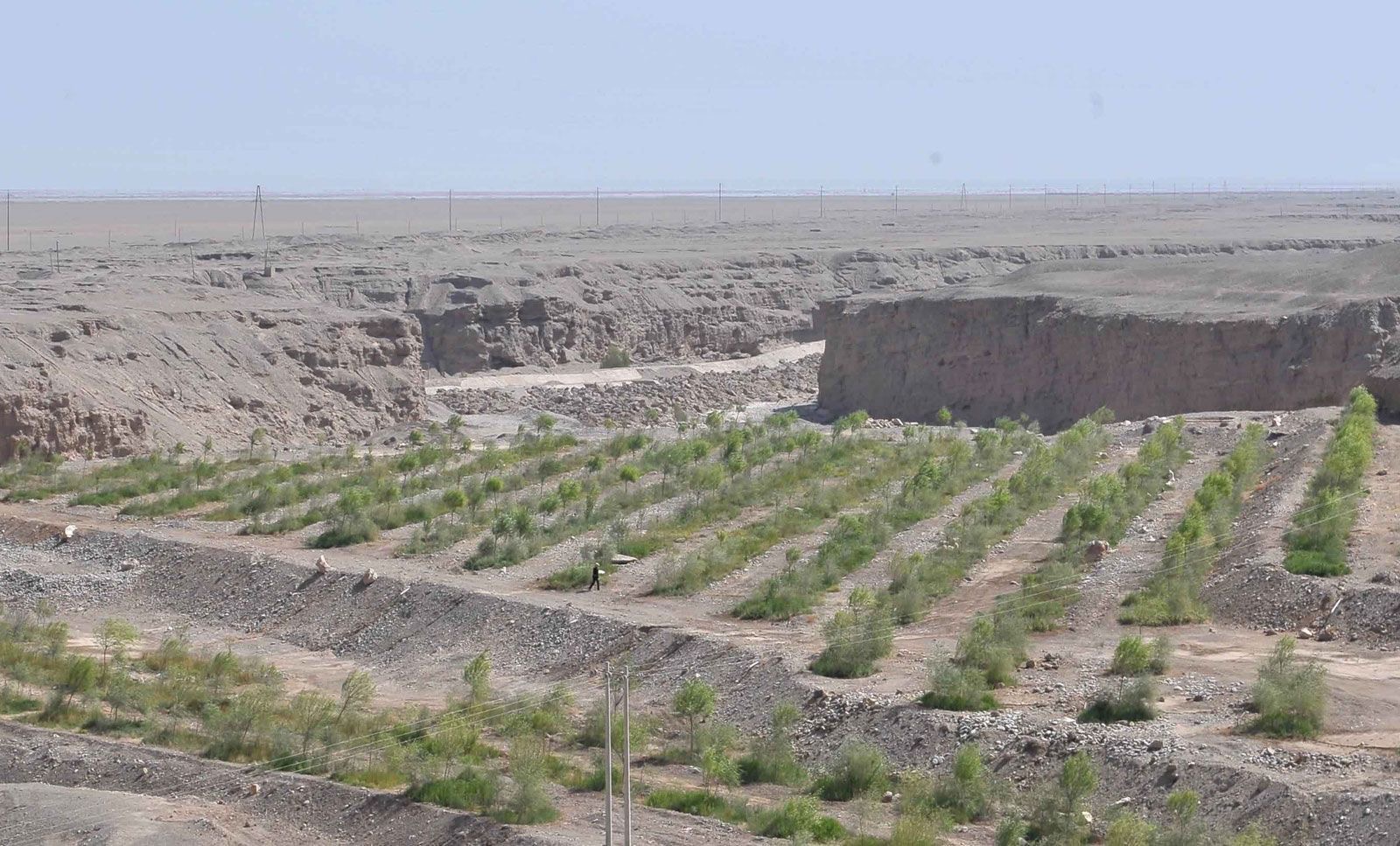
The global reach of desertification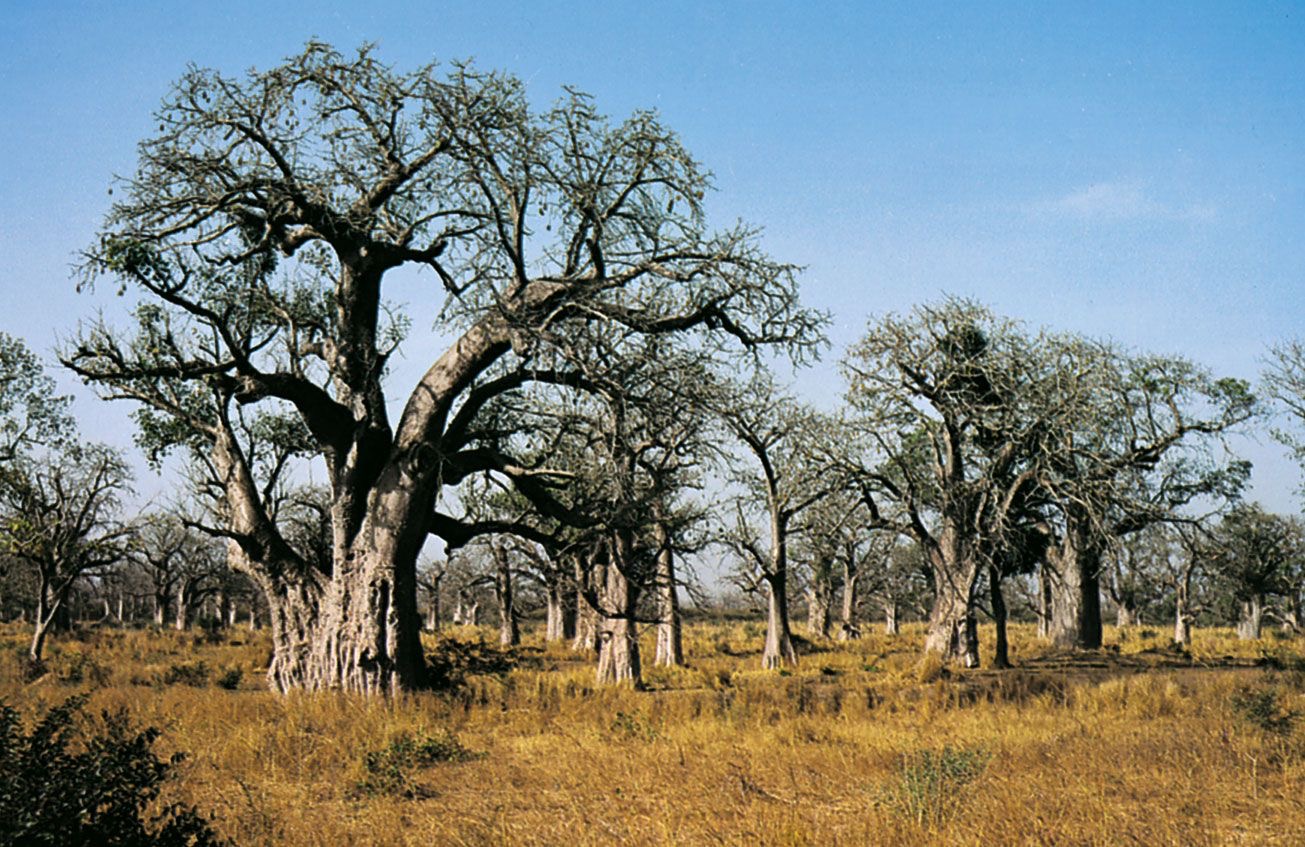
Slightly less than half of Earth’s ice-free land surface—approximately 52 million square km (about 20 million square miles)—is drylands, and these drylands cover some of the world’s poorest countries. The United Nations Environment Programme (UNEP) notes that desertification has affected 36 million square km (14 million square miles) of land and is a major international concern. According to the United Nations Convention to Combat Desertification, the lives of 250 million people are affected by desertification, and as many as 135 million people may be displaced by desertification by 2045, making it one of the most severe environmental challenges facing humanity.
Africa is the continent most affected by desertification, and one of the most obvious natural borders on the landmass is the southern edge of the Sahara desert. The countries that lie on the edge of the Sahara are among the poorest in the world, and they are subject to periodic droughts that devastate their peoples. African drylands (which include the Sahara, the Kalahari, and the grasslands of East Africa) span 20 million square km (about 7.7 million square miles), some 65 percent of the continent. One-third of Africa’s drylands are largely uninhabited arid deserts, while the remaining two-thirds support two-thirds of the continent’s burgeoning human population. As Africa’s population increases, the productivity of the land supporting this population declines. Some one-fifth of the irrigated cropland, three-fifths of the rain-fed cropland, and three-fourths of the rangeland have been at least moderately harmed by desertification.
Causes and consequences of desertification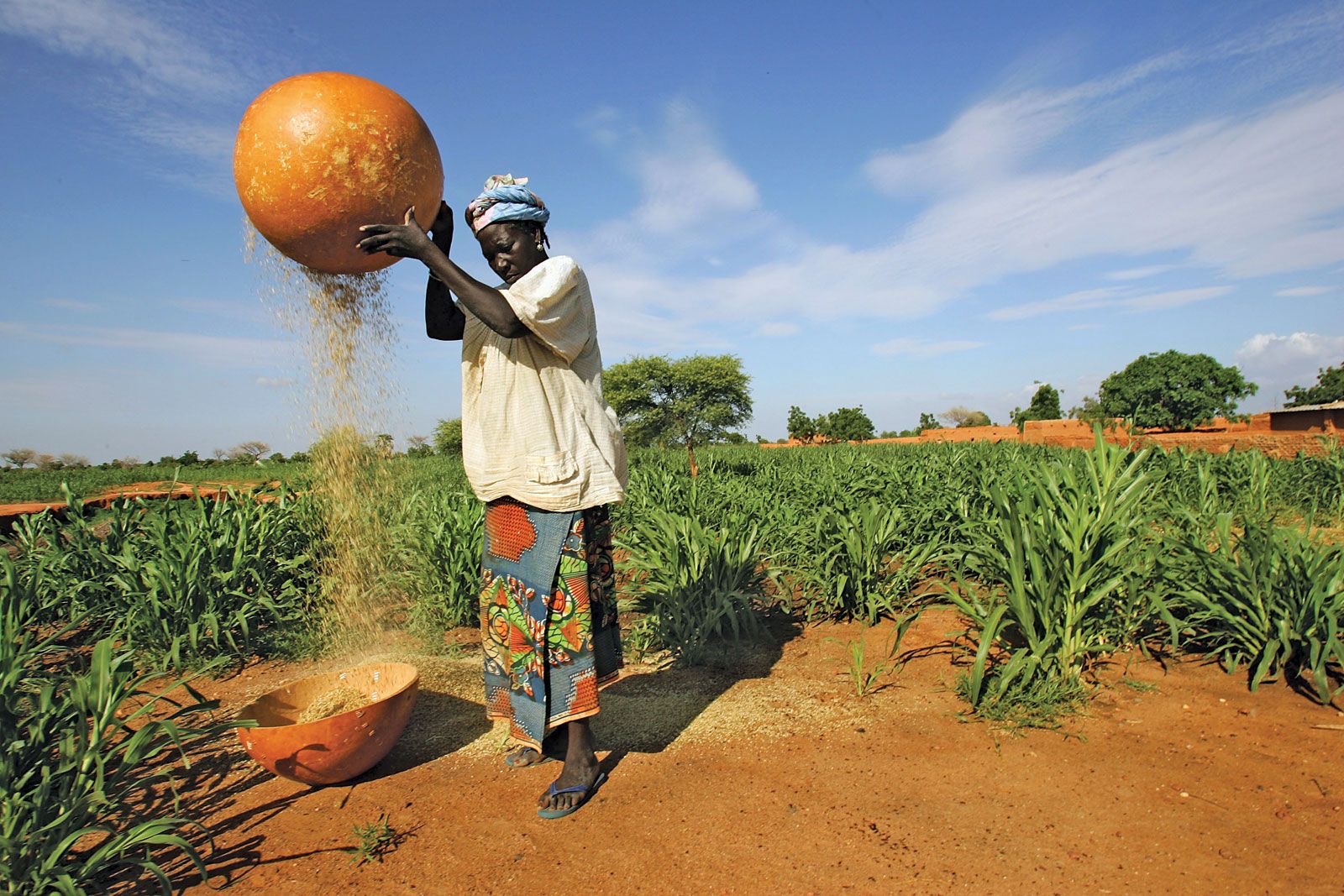
In general, desertification is caused by variations in climate and by unsustainable land-management practices in dryland environments. By their very nature, arid and semiarid ecosystems are characterized by sparse or variable rainfall. Thus, climatic changes such as those that result in extended droughts can rapidly reduce the biological productivity of those ecosystems. Such changes may be temporary, lasting only a season, or they may persist over many years and decades. On the other hand, plants and animals are quick to take advantage of wetter periods, and productivity can rapidly increase during these times.
Since dryland environments are used for a variety of human purposes (such as agriculture, animal grazing, and fuelwood collection), the various activities undertaken in them can exacerbate the problem of desertification and bring about lasting changes to dryland ecosystems. In 1977, at the United Nations Conference on Desertification (UNCOD) in Nairobi, Kenya, representatives and delegates first contemplated the worldwide effects of desertification. The conference explored the causes and contributing factors and also possible local and regional solutions to the phenomenon. In addition, the delegates considered the varied consequences of desertification, such as crop failures or decreased yields in rain-fed farmland, the loss of perennial plant cover and thus loss of forage for livestock, reduced woody biomass and thus scarcity of fuelwood and building materials, a decrease in potable water stocks from reductions in surface water and groundwater flow, increased sand dune intrusion onto croplands and settlements, increased flooding due to rising sedimentation in rivers and lakes, and amplified air and water pollution from dust and sedimentation.
Four areas affected by desertification
To better understand how climatic changes and human activities contribute to the process of desertification, the consequences listed above can be grouped into four broad areas:
-
Grazing lands, which are harmed by overgrazing, soil compaction, and erosion.
- Dry woodlands, which are plagued by the overconsumption of fuelwood.
Irrigated croplands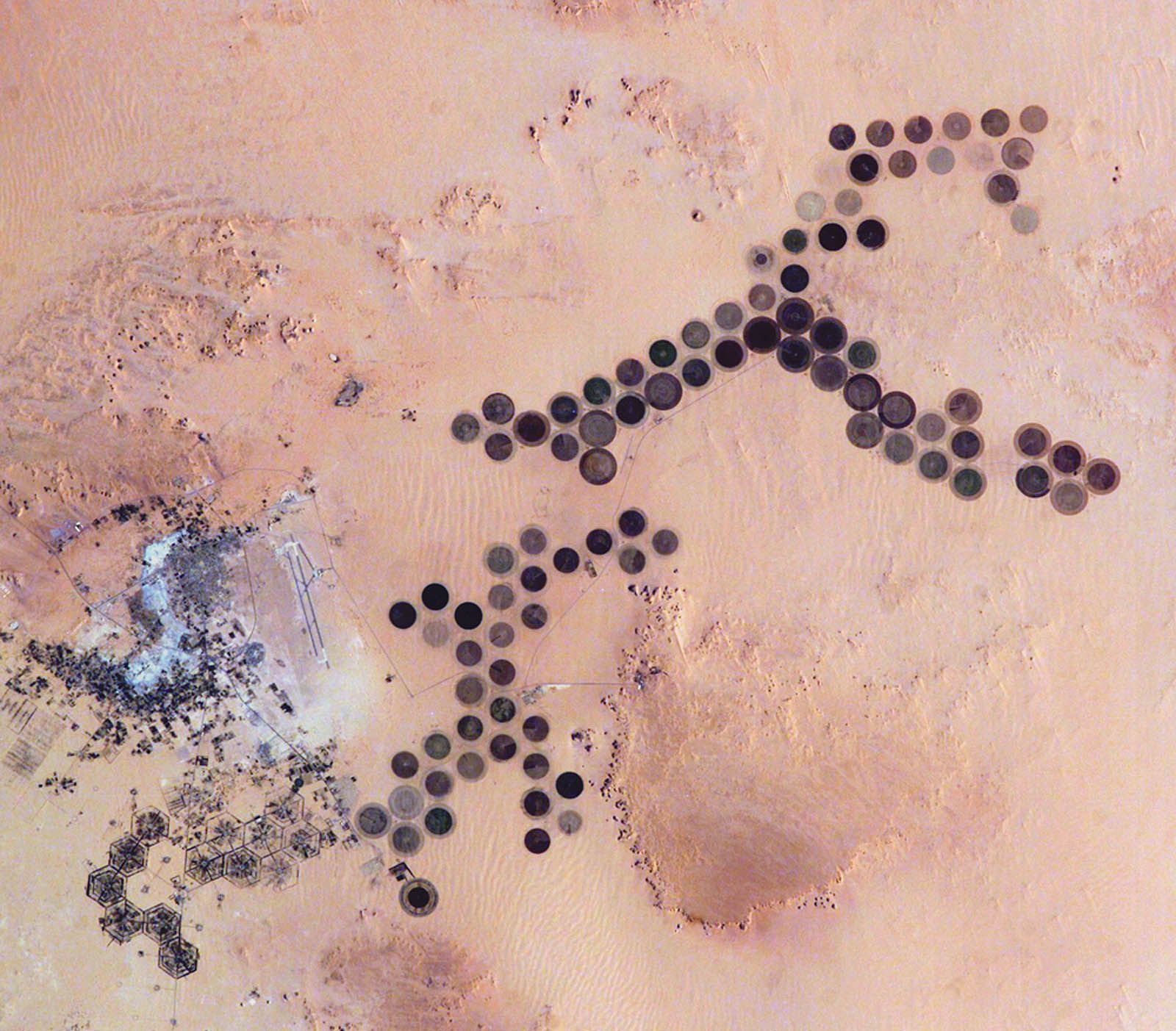
Nearly 2,750,000 square km (about 1,062,000 square miles) of croplands are irrigated. Over 60 percent of these irrigated areas occur in drylands. Certainly, some dryland areas have been irrigated for millennia, but other areas are more fragile. Of the irrigated dryland, 30 percent (an area roughly the size of Japan) is moderately to severely degraded, and this percentage is increasing.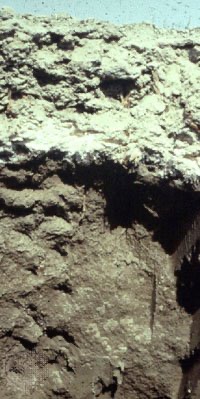
The main cause of declining biological productivity in irrigated croplands is the accumulation of salts in the soil. There is an important difference between rainwater and the water used for dryland irrigation. Rainwater results from the condensation of water evaporated by sunlight. Essentially, rainwater is distilled seawater or lake water. In contrast, water used for irrigation is the result of runoff from precipitation. Runoff percolates through the soil, dissolving and collecting much of the salts it encounters, before finding its way into rivers or aquifers. When used to irrigate crops, runoff evaporates and leaves behind much of the salts that it collected. Irrigated crops need an average of 80 cm (about 30 inches) of water annually. These salts can build up in the soil unless additional water is used to flush them out. This process can rapidly transform productive land into relatively barren salt flats scattered with halophytes (plants adapted to high levels of salt in the soil). Most salt-degraded cropland occurs in Asia and southwestern North America, which account for 75 and 15 percent of the worldwide total, respectively. In Asia, Iraq has lost over 70 percent of its irrigated land to salt accumulation. In Russia, much of the irrigated land located where the Volga River runs into the Caspian Sea may last only until the middle of the 21st century before the buildup of salts makes it virtually unusable. Such losses are not restricted to developing countries. In the United States, salt accumulation has lowered crop yields across more than 50,000 square km (19,000 square miles), an area that is about a quarter of the country’s irrigated land.
Rain-fed croplands
Drylands also support rain-fed crops. Before cultivation, such areas were often vast grasslands. They now cover about 5 million square km (about 2 million square miles) and account for roughly one-third of all croplands worldwide. They receive less than 60 cm (about 24 inches) of rain each year, and thus they are at the margin of what farmers can use for crops without at least some irrigation. Rainfall can vary considerably from one year to the next, so those lands may experience droughts that often lead to crop failure. Globally, more than 2,000,000 square km (about 770,000 square miles) of rain-fed croplands are moderately to severely degraded, and each year about 1 percent of those lands is abandoned.
The crops grown on drylands are annuals; each year they emerge from seed, mature, and die. Grains such as wheat and corn (maize) are annuals that account for roughly 85 percent of global food production. After these grains are harvested, the lands are left uncovered until the next planting season. During this time, the soil is vulnerable to erosion by wind and rain. Wind can whip up the unprotected topsoil to create severe dust storms. Such dust storms often transport the soils, along with the nutrients they contain, over long distances. Rainfall is scarce in drylands, but when it does come it can be torrential. Heavy downpours often wash away the soils on bare ground or deplete them of their nutrients. In contrast, native grasslands contain a mix of mainly perennial species that inhibit erosion. Perennials live from year to year, have deeper roots to bind the soil, and do not leave the soils exposed for months on end.
Grazing lands
Desertification also occurs in rangelands. Typically, the damage in those environments can be separated into damage to soil and damage to vegetation. The former is more important than the latter; however, large areas experience both. The process of soil damage and loss often begins with the activities of grazing animals. Grazing livestock sometimes consume plants down to the ground. This activity weakens the individual plant; with a reduction in tissues capable of photosynthesis, its growth is greatly inhibited. In addition, livestock herds may trample and kill vegetation by walking to and from permanent water sources. Trampling destroys plant roots that bind the soil together. When rains come to those grazing lands, rivulets often form along the walking paths and wash away unprotected topsoil. Also, the repeated movement of herds over one section of the landscape can compact the soil, hindering the development of plant roots.
Livestock can substantially alter plant communities. It may be obvious that these animals reduce plant populations through their grazing activities, but livestock can also change the composition of the plant community by consuming some species and leaving others alone. The grazing pressure placed on grasses and other edible species gives a competitive advantage to cacti and other inedible species. For example, in the southwestern United States, honey mesquite (Prosopis glandulosa) is a native shrub, but it can increase its range considerably when cattle overgraze grasslands. The resulting plant community supports few livestock and is a persistent one—that is, the extensive thickets of mesquite often prevent grasses from recolonizing their former range.
Dry woodlands
The fourth area of desertification is dry woodlands, which are greatly affected by the overconsumption of firewood. Across large areas of Asia and Africa, the principal raw material for cooking and heating is wood. Firewood in these areas is often converted to charcoal in earthen kilns before it is used, because charcoal gives off less smoke than wood. The conversion process is often inefficient, however, with about 75 percent of the wood’s heating potential lost. In Africa and Asia a very rough estimate of the per capita consumption of firewood is about half a ton per year. Across large areas of dryland where total plant production is roughly two tons per hectare per year, a family of four would have to clear a hectare of land or more per year. Very often, such deforested areas are not replanted. As human population densities increase, one can imagine that they might consume more wood than the land could support and create a “fuelwood crisis.”
Solutions to desertification
The struggle against desertification can occur at several levels. Since regional variations in climate are the main causes of the loss of dryland productivity, it is important to understand the influence of global warming in specific dryland regions. According to some models of climate change, many grasslands in western North America, for example, are predicted to be at greater risk of drought due to projected increases in summer temperatures and changes to existing rainfall patterns. Many authorities argue that since desertification and global warming are so closely related, one of the main solutions to the former may be the implementation of effective economic policies (such as carbon trading) and technical measures (such as carbon sequestration) that reduce the production of greenhouse gases.
At local scales, however, desertification is often the result of unsustainable land and soil management. To maintain the biological productivity of the land, soil conservation is often the priority. A number of innovative solutions have been devised that range from relatively simple changes in how people grow crops to labour-intensive landscape engineering projects. Some of the techniques that may help ameliorate the consequences of desertification in irrigated croplands, rain-fed croplands, grazing lands, and dry woodlands include:
-
Irrigation improvements, which can inhibit water loss from evaporation and prevent salt accumulation. This technique involves changes in the design of irrigation systems to prevent water from pooling or evaporating easily from the soil.
- Cover crops, which prevent soil erosion from wind and water. They can also reduce the local effects of drought. On larger scales, plant cover can help maintain normal rainfall patterns. Cover crops may be perennials or fast-growing .



